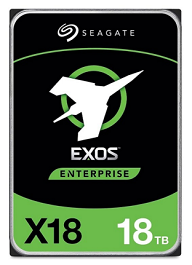Materials Efficiency and Circularity
Seagate recognizes the traditional “take, make, dispose” linear approach to business is unsustainable. We measure our progress towards a circular economy with a variety of indicators including material used per TB of storage, use of recycled content, reuse rates, and recycling type and efficiency.
| Device Weight - Shipped (g) |
Per Unit |
Per TB |
| Drive |
Enclosure |
519 |
29 |
| Media |
138 |
8 |
| Electronics |
16 |
1 |
| Packaging |
Cardboard and paper |
55 |
3 |
| Other materials |
19 |
1 |
| Total |
747 |
41 |
| Key Circularity Parameters |
Per Unit |
| Estimated Operating Life |
5 years |
Recycled aluminum in base plate |
90% |
Recycled aluminum in other parts |
World average |
Recycled steel content |
World average |
Recycled cardboard |
100% |
Reused content |
zero |
Recycling rate |
25% |
Residual disposal |
100% landfill |
Reuse rate |
zero |
Recycling efficiency |
95% |
Recycling collections efficiency |
90% |
Seagate measures and reports its product sustainability performance on a TB-year basis. Seagate's drives come in different storage sizes and have different estimated useful lives. When referring to drive capacity, one terabyte, or TB, equals one trillion bytes. The TB-year measure combines these factors so that sustainability performance data is comparable across products and that annual impacts are directly reported. Seagate uses the Ecoinvent 3.8 Life Cycle Inventory database.
Seagate’s sustainability assessment tools used to generate life cycle assessment results have been verified by UL in accordance with ISO 14040, ISO 14044, and the World Resources Institute and World Business Council for Sustainable Development's GHG Protocol Product Life Cycle Accounting and reporting Standard.
© 2021 Seagate Technology LLC. All rights reserved. Printed in USA. Seagate, Seagate Technology and the Wave logo are registered trademarks of Seagate Technology LLC in the United States and/or other countries. Seagate reserves the right to change, without notice, product offerings or specifications. DS1663.4-0911US, March 2016.
Print Report
















